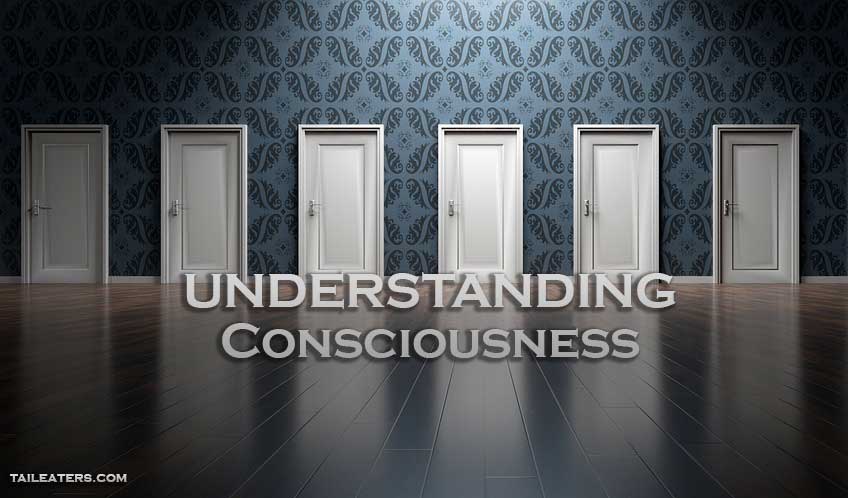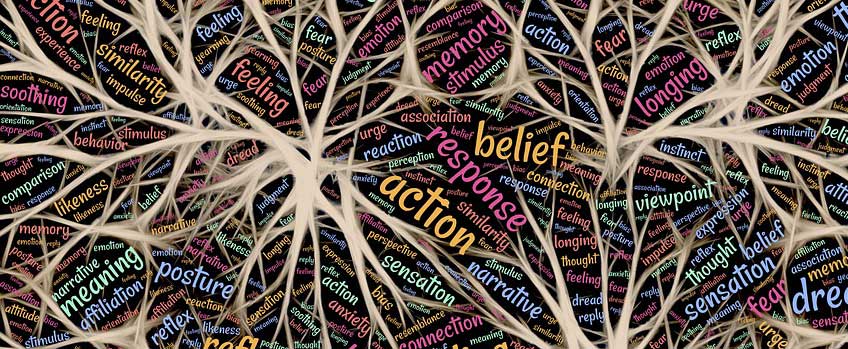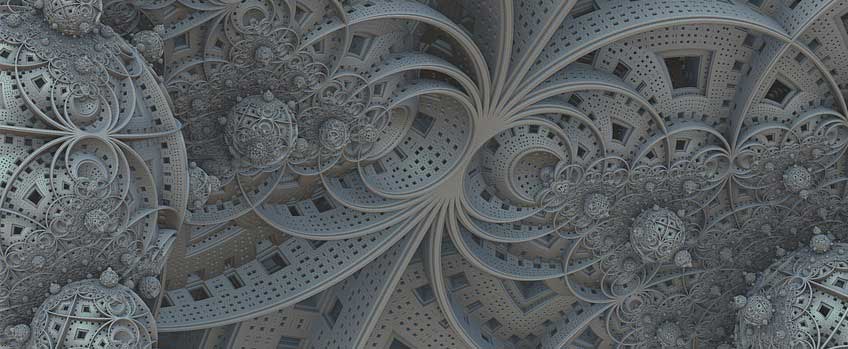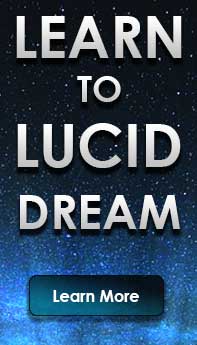
Understanding Consciousness
Years ago I wrote a paper on the basic understanding of consciousness. I wanted to share that paper as it had some interesting points in it, mainly the focus on consciousness being formed from an interaction of in sync neurons throughout the body. To me, this is still a realistic view as to how consciousness is made and I would enjoy hearing some feedback on the subject.
Throughout history the consciousness has been a questioned concept. It has been thought to be located in different areas of the human body and recently ended up being in the human brain. With more research being conducted it should be considered that the human mind is not the only location where consciousness flows from and that there are many different types of consciousness. From the stomach and the heart to the brain and its many different parts, consciousness has a large spectrum of inputs and alterations that create the experience of the human self.
History
The understanding of consciousness is something that humans have always wondered about. Philosophers like Socrates and Plato argued that there were three levels of consciousness, while Descartes would describe the seat of the soul is a part of the brain called the pineal gland (Norden, 2007).
In the ancient Egyptian civilization, the pharos brains were discarded, while their heart was kept for the afterlife as it was regarded as the seat of consciousness (Norden, 2007). Even during the time of the Greeks, Aristotle still considered the heart to be the epicenter of cognition. It wasn’t up until the renaissance that consciousness shifted from the heart to the brain (Norden, 2007).
Renaissance artist Leonardo da Vinci believed that the ventricles in the brain were the cause of cognition. The French philosopher and mathematician Rene Descartes believed that the pineal gland in the brain was the seat of the soul (Norden, 2007). Still, it wasn’t until the 17th century when Tomas Willis produced some of the most comprehensive drawings of the brain as well as treated people who had brain disorders that it was believed that all of the body’s movement and cognition were located in the brain formations (Norden, 2007). It is for this reason that Dr. Willis is considered to be the father of neuroscience (Norden, 2007).
Since the 17th-century science has produced more accurate models of what creates consciousness in the human experience but we still have yet to explain what consciousness is and where it comes from. In order to understand the complexity of the subject, we need to review the sheer complexity of the human mind.
Complexity
The average human brain contains about 100 billion neurons that use The Neuron Doctrine as a model of communication. The brain has over 100 trillion synapses to transmit information through (Norden, 2007). There are over 40 neurotransmitters that are known to be used in order to transmit information across those synapses and scientists are continually finding more (Norden, 2007).
It was recently discovered that synapses are also not static in what neurotransmitter is used for communication; this means that synapses and dendrites are able to temporarily accept and send different chemical neurotransmitters in order to send and receive information (Norden, 2007). What this all means is that the brain is the most complex system of communication that is known to man.
Even in recent years neuroscientist still has little idea how these neurons know what compounds to send as communication neurotransmitters but what scientist have been starting to understand is that the brain is not a just one big organ. The brain is a complex series of different organs, together making up our sensory experience (Norden, 2007). Scientists know this because they have studied individuals who had disorders of the brain that changed their behavior based on the area of the brain being affected. These changes included how the person thought about themselves and the world around them, ultimately this was a change in the conscious thought they had before.
Loss of Consciousness
In order to understand the complexity of consciousness scientists have been studying different ways in which consciousness has been altered. Such as causing a dysfunction in a specific area of the brain for understanding those areas’ functions. Forcibly changing someone’s consciousness has allowed for scientists to see what areas of the brain must be functional in order for consciousness to occur. Studying individuals in different sleep stages has allowed for an understanding of the human mind in altered states and a recognition of different forms of consciousness.
Dreaming Consciousness
It was thought by Sigmund Freud that during the REM (rapid eye movement) phase of sleep the brain was under the control of the sub-consciousness (Hobson, 2002). Allen Hobson, one of the most educated individuals in the area of sleep research, would say that the brain has no control of any kind during the sleep phase and that any type of dream is accidental (Hobson, 2002). From personal experience as well as well documented dream experiences we can see that neither Freud nor Hobson are correct, as dreams sometimes have personal subconscious meaning as well as no meaning at all. We can further understand this subject by talking about another form of dreaming, lucid dreaming.
According to a recent study on lucid dreaming, lucid dreaming is not dreaming at all. Rather, it has been claimed to be another form of consciousness, such that you are neither awake nor dreaming (Hurd, 2009). Lucid dreaming is an occurrence where the individual experiencing a dream becomes aware that they are dreaming (Laberg, 1997). The real fascinating part of this occurrence is the ability to obtain full awareness while dream content continues to be experienced, making it seem as though two consciousnesses are controlling the experience, the conscious individual and the dream narrator. During the sleep phase, different areas of the brain are modulated on due to the cholinergic REM on system and off due to the serotonin REM-off (hobson, 2002). Because of these two different systems, different areas of the brain are also disengaged or modulated in order for the body to experience sleep. As a result, the subject asleep feels different than they were awake. They may not remember the experience while they are asleep, they may not notice things are out of place, and they may not be able to move in their dreams. In contrast to dreaming, in lucid dreaming, the person becomes aware and is able to remember all of their experience and are even able to purposely interact with dream characters and objects. We can see that the brain has modulated itself in another way during this state. The process of dream formation and modulation is triggered by the reticular formation located throughout the brainstem which has a large influence on the thalamus and cortex of the brain (Norden, 2007). The thalamus then relays information to the cortex which results in the dream experience (Norden, 2007).
Lucid dreaming normally occurs during REM cycle, but another type of lucid dreaming is being explored that occurs more often in stage 2 of sleep. Children often experience night terrors during this stage, and adults experience nightmares or the old hag syndrome (Hufford, 1982). Also, during this time frame, individuals have experienced extreme lucid dreaming that is sometimes referred to as Out of Body Experiences (Laberg, 1997).
During this stage of consciousness, the individual is fully aware of his or her surroundings but somehow unable to determine what is real or fantasy. In most cases, the individual awakes in their place of sleep, performs a normal nightly function such as going to the bathroom and comes back to their bed relieved unnoticing that they were really dreaming the entire time. Individuals that experience this state of consciousness in a lab setting have been seen to have their eyes open but are fully in stage 2 of sleep. Most hypnotic hallucinations seem to occur during this state of sleep. This early dreaming over stimulates the amygdala, causing a strong range of emotions, of which fear is the most common (Hobson, 2002). As a result, most extreme lucid states are followed by some type of nightmarish hallucination.
During extreme lucid dreaming, the consciousness is once again altered in some way, making it so that a dreaming person is unable to wake from their dream, causing them to experience dream characters and a dream environment. Unlike normal lucid dreaming states the thalamus seems to have modulated the brain in a different way, allowing for a clear understanding of the surroundings. This could be because of the possibility still partially activation of the serotonin REM-off system.
Drug-Induced Consciousness
Much like dreaming, drug-induced altered consciousness has many of the same factors contributing to the experience of hallucinations. With psychedelics, the individual experiences dreamlike narration where they have the conscious self and many different dream characters which in doughtily are another aspect of the self (Shanon, 2002). Since not much research has been done in the United States on the use of psychedelics, it can only be assumed that many of the same areas of the brain are activated in some ways as they are in dreams; however due to individuals clarity and memory of the experience, the extreme lucid dreaming model is a more realistic prospect of the experience (Shanon, 2002).
Other forms of Consciousness
There have been recent studies done on the stomach and how it communicates with the brain. According to the chairman of the department of anatomy and cell biology at Columbia, the stomach contains about 75% of the total amount of the neurotransmitter serotonin in the body and sends the serotonin to the brain as a form of communication, It is all probable that the neurons in the stomach act much like the neurons in the brain and are able to communicate some type of processes to the brain much like any area of the brain (Brown, 2005). For this reason, it can be hypothesized that other parts of the human body that contain a substantial number of neurons may be able in some way to impact consciousness. This theory is further supported by how some indigenous tribes from around the world have a tradition where they believe the stomach to be the center of emotion, much like the heart in other cultures. It is also interesting that the heart is thought to contain a microscopic cluster of neurons that much like the stomach relays information to the brain rather than the brain to the heart (Madurasinghe, 2008). It could be said that this gives rise to the reasons that for such a long period of time, culture believed cognition was in areas of the body other than the brain.
Consciousness Redefined
Consciousness is not a static object. It constantly changes with its involvement with memories and areas of the brain currently modulated or demodulated and only seems to stop responding when an individual has no more brain function due to reticular formation damage. Consciousness can be experienced by the same individual in different ways through hypnosis, dreaming, drug alterations, and dysfunctions of the brain. During those experiences, would we say that the person that is experiencing those events is the same person? The answer is, of course, yes, but just a different aspect of that person. It is for this reason that it should be proposed that consciousness is not located in just one area of the human mind, but in many different areas. Consciousness seems to be a joint effort of many different areas of the brain in phase with each other, creating the individual and individual’s experience. Individuals with disorders where they experience schizophrenia are simply experiencing another phase of consciousness or an interaction with a different number of neurons or areas of the brain. Like schizophrenia or multiple personality disorder, the same experience is depicted during the dreaming process. The only real difference is that the person is awake and under normal circumstances, the phasing in of neurons would not happen. Talking to one’s self is also a good depiction of one area of the brain being in phase and another being in a different phase as two different thought processes are taking place at the same time. They are two different consciousnesses speaking together in order to create the world around them as like in dreaming and the involvement of the narrator effect.
Discussions
The current understanding of the complexity of the brain and the ability of the brain bypasses our experimental ability. Because of this, we are unable to understand how the brain works in my different areas, consciousness being one of those. In order to further expand on what we currently know about consciousness, there needs to be some type of movement in the direction of altered consciousness studies. These studies can be done with further lucid dreaming experimentations, drug-induced alterations, or with individuals whose disorders demonstrate consciousness type disorders. This area of study is important in understanding why humans act the way they do and think the way they do. Also, from this research, we may obtain some type of basic understanding of what consciousness is and how the mind communicates internally with itself as well as the body as a whole. This understanding would greatly help us understand consciousness as we move forward as a species and expand our technology with artificial intelligence and the progress forward to make computers conscious.
References
Brown, H. (2005, August 23). The other Brain also deals with many woes . The Other Brain Also Deals With Many Woes , Retrieved from http://www.nytimes.com/2005/08/23/health/23gut.html?_r=2
European Science Foundation (2009, July 29). New Links Between Lucid Dreaming And Psychosis Could Revive Dream Therapy In Psychiatry. ScienceDaily. Retrieved December 7, 2009, from http://www.sciencedaily.com /releases/2009/07/090728184831.htm
Hobson, A. J. (2002). The Dream Drugstore: Chemically Altered States of Consciousness. MIT Press.
Hufford, D. (1982). The Terror that comes in the night . Philadelphia, PA: University of Pennsylvania Press.
Hurd, R. (2009, September 19). Lucid dreaming: a hybrid of rem and waking cognition. Retrieved from http://dreamstudies.org/2009/09/18/lucid-dreaming-hybrid-gamma-biurnal-beats/#more-1343
LaBerg, Stephen, & Rheingold, Howard (1997). Exploring the World of Lucid Dreaming.Ballantine Books.
Madurasinghe, L. (2008, June 15). The other Brain also deals with many woes . The Other Brain Also Deals With Many Woes , Retrieved from http://madurasinghe.blogspot.com/2008/06/neurocardiology-brain-in-heart.html
Norden, J. (2007). Understanding the brain. Westfields, VA: The Teaching Company.
Shanon, B. (2002). The Antipodes of the mind. Oxford, NY: Oxford University Press. (Shanon, 2002)
Lee Adams is a Ph.D. candidate in Jungian Psychology and Archetypal Studies at Pacifica Graduate Institute and host of Cosmic Echo, a lucid dreaming podcast, and creator of taileaters.com, an online community of lucid dreamers and psychonauts. Lee has been actively researching, practicing, and teaching lucid dreaming for over twenty years.
Join the Discussion
Want to discuss more about this topic and much more? Join our discussion group online and start exploring your consciousness with others like yourself






Recent Comments